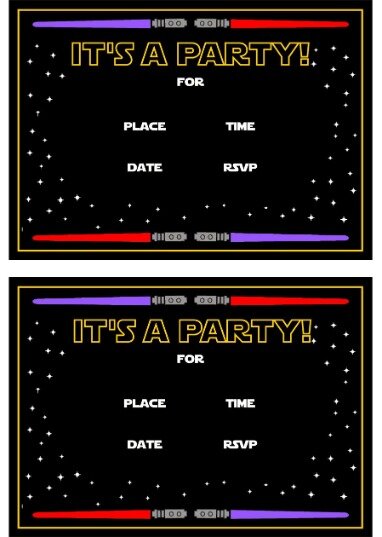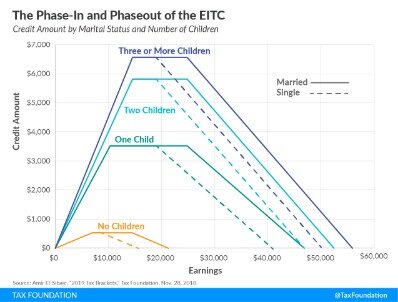Accounting For Uncollectible Receivables
Contents:


This eliminates the revenue recorded as well as the outstanding balance owed to the business in the books. But, under the direct write-off method, the loss may be recorded in a different accounting period than when the original invoice was posted. This method does not follow the matching principle because the uncollectible or bad debts involved are recognized in other periods than in the one in which the income is earned. When the seller can make a reasonable estimate of the rupee amount to be written off, the allowance method should be used.

The problem with this accounts receivable balance is there is no guarantee the company will collect the payment. For many different reasons, a company may be entitled to receiving money for a credit sale but may never actually receive those funds. The direct write-off method doesn’t consider a bad debt expense until there is no expectation of recovery.
The Direct Write-Off Method Means a Debt Is Forgiven
With the direct write-off method, many accounting periods may come and go before an account is finally determined to be uncollectible and written off. As a result, revenues from credit sales are recognized in one period, but the costs of uncollectible accounts related to those sales are not recognized until another subsequent period . The direct write-off and allowance methods record the bad debt in different periods. The direct write-off method lets small business charge the bad debt expense account when they believe they won’t be able to recollect the invoice.
Many companies in the business world sell their goods or services for credit. Buying something on credit means that the ownership of the goods is transferred to the buyer at the point they take possession but payment is not due until some agreed upon point in the future. Typically, there is an established relationship between the buyer and seller or a formal process to determine how much credit to extend to a customer. This process may include completing a credit check and establishing a line of credit for customers based on their credit score. Over time their proven ability to pay may allow them to increase their credit limits. This second method is simpler than the allowance method in that it allows for one simple entry to reduce accounts receivable to its net realizable value.
Accounts receivable discounted refers to the selling of unpaid outstanding invoices for a cash amount that is less than the face value of those invoices. The right to receive cash in the future from customers for goods sold or for services performed. Below are some ways the direct write-off method and allowance method differ from one another. The lawyer can help you write an appropriate warning letter and make sure that you are protected from legal action from the customer. Despite the apparent benefits, there are some caveats to consider when choosing a direct write-off over the allowance method.
Dealing with Foreign Currency and Bad Debts
By the end of the year, it became clear that the statement of activities was uncollectible, so the company decided to write off the debt. On December 31, ABC Inc. recorded a credit of $500 to Accounts Receivable and a debit of $500 to Bad Debt Expenses. In January 2020, the company issued an invoice to one of its customers, David Smith, for $500. The customer failed to pay the invoice by the due date, and the company tried several times to collect the debt but was unsuccessful. The company uses the direct write-off method to account for uncollectible accounts. Consider a company named ABC Inc. that sells products to its customers on credit.
Using the direct write-off method, your business reports the full amount of what customers owe when a credit sale is made. But if your company were to have uncollectible accounts receivable, the amount in accounts receivable would be too high. When a company makes a credit sale, it books a credit to revenue and a debit to an account receivable.
- With the direct write-off method, many accounting periods may come and go before an account is finally determined to be uncollectible and written off.
- The direct write-off method is used in the U.S. for income tax purposes.
- Natalie has many customers who purchase goods from her on credit and pay.
- Under the direct write-off method, a bad debt expense account is recognized when an uncollectible account is…
- The major disadvantage of the Direct Write-off method is the possibility of expense manipulation because companies record expenses and revenue in different periods.
- Bad debt refers to any amount owed by a customer that will not be paid.
The allowance method provides an expense for uncollectible receivables in advance of their write off. First, it reduces the value of the receivables to the amount of cash expected to be realized in the future. Second, it matches the uncollectible expense of the current period with the related revenues of the period.
Accounting Principles I
Under the allowance method, a company needs to review their accounts receivable and estimate what amount they won’t be able to collect. This estimated amount is then debited from the account Bad Debts Expense and credited to a contra account called Allowance for Doubtful Accounts, according to the Houston Chronicle. The direct write-off method is a way for businesses to record bad debt.
Beginning bookkeepers in particular will appreciate the ease of the direct write-off method, since it only requires a single journal entry. If an old debt is paid, the journal entry can simply be reversed and the payment posted to the customer’s account. The direct write-off method lets you charge bad debts directly to an expense such as the Allowance for Bad Debt account used in the journal entries above. By far the easiest write-off method, the direct write-off method should only be used for occasional bad debt write-offs. Coca-Cola has several assets that are listed on its balance sheet.

This keeps bad debts from having a bigger effect on the company’s financial statements than they need to, which can improve their accuracy and reliability. The direct write-off method is simple to understand and implement. Businesses do not need to keep track of specific allowances for bad debts and can simply write off a debt as soon as it is determined to be uncollectible. This makes accounting easier and makes it less important to have special skills or training in bad debt accounting. The direct write-off method, a simple yet powerful tool in the accounting world, has been a lifesaver for many small businesses and startups dealing with credit sales. It’s a way to keep track of accounts, debts, or account balances that are not likely to be paid back.
This method does not account for the time value of money or the fact that some debts may be collectible in the future. Because of this, many businesses prefer the allowance method, which gives a more accurate picture of the company’s finances. The direct write-off method does not provide for an estimate of future bad debts, which can result in an understatement of bad debt expense. This can make the company’s financial statements overstate how strong its finances are, which can lead to stakeholders and investors having too high of expectations. The direct write-off method is more realistic than other accounting methods for bad debts.
How To Use the Direct Write-Off Method
Also, it’s important to note that the direct write-off method can still be useful in some cases, like when a company has a small number of accounts and can easily tell which ones are unlikely to be paid. In these cases, the direct write-off method can be simpler and less time-consuming than the allowance method. However, for most companies, the benefits of the allowance method make it the preferred method of accounting for bad debts. Also, the direct write-off method doesn’t take into account how uncertain it is that accounts receivable will be paid. GAAP requires companies to use the allowance method, which estimates bad debts based on past experience and adjusts the estimate as needed.
Bad debt expense is used to reflect receivables that a company will be unable to collect. This method helps to minimize errors because no calculations are involved here. There is also no chance of understating and overstating expenses.
It can also reduce the cost of collecting on debts, which might help you create more flexible terms before something becomes uncollectible. Reversing a write-off requires time and effort, so think carefully before reversing a decision. It can also have tax implications, so consult your accountant to determine the best course of action. The following chart shows how the direct write-off method would account for the uncollectible account. The direct write-off method will change a business’s tax responsibilities, so it’s important to talk to a tax expert about it. Any size business can use the direct write-off method, which is a popular choice for many small businesses because of its simplicity and ease of use.
StorageReview Calculated 100 Trillion Digits of Pi in 54 days, Besting Google Cloud – StorageReview.com
StorageReview Calculated 100 Trillion Digits of Pi in 54 days, Besting Google Cloud.
Posted: Tue, 18 Apr 2023 15:45:50 GMT [source]
That is, costs related to the production of revenue are reported during the same time period as the related revenue (i.e., “matched”). Under the allowance method, a write‐off does not change the net realizable value of accounts receivable. It simply reduces accounts receivable and allowance for bad debts by equivalent amounts.
For example, Apple representing nearly $200 billion in cash & cash equivalents in its balance sheet is an accounting transaction. The major disadvantage of the Direct Write-off method is the possibility of expense manipulation because companies record expenses and revenue in different periods. The direct write-off method does not comply with the generally accepted accounting principles , according to the Houston Chronicle.
The term „direct write-off method“ comes from the field of accounting. It is a way to count bad debts and losses from accounts that can’t be paid back. Businesses use this method to show losses on their financial statements as soon as they know they won’t be able to get money from a customer.
China Watcher: Secret police — Fentanyl frustration — Photon Media – POLITICO Europe
China Watcher: Secret police — Fentanyl frustration — Photon Media.
Posted: Thu, 20 Apr 2023 10:00:00 GMT [source]
It must be within the rules and laws framed by the bodies for an accounting of transactions so that a true and correct picture of the Financial Statements can be shown to the stakeholder of the entity. Therefore it is not advised to use the Direct Write-off Method to book for the uncollectible receivables. Instead, the company should look for other methods such as appropriation and allowance for booking bad debts for its receivables. Balance SheetA balance sheet is one of the financial statements of a company that presents the shareholders‘ equity, liabilities, and assets of the company at a specific point in time. It is based on the accounting equation that states that the sum of the total liabilities and the owner’s capital equals the total assets of the company. This journal entry eliminates the $500 balance in accounts receivable while creating an account for bad debt.
Management direction on policies and procedures should be tightly controlled and followed to ensure audit compliance and accurate financial reporting. Let’s look at the accounting for these sale on credit transactions. On a business’s income statement we will increase our sales or sales revenue. On the balance sheet we will increase our current assets and the amount due from our customers, known as accounts receivable. Current assets are considered balances that can be converted into cash in 12 months or less.
At the end of the financial year, the company found that one of its customers, Customer X, had failed to pay its outstanding balance of $10,000. The direct write-off method is also related to the matching principle of accounting, which says that expenses should match the income they bring in. The contra asset account compilations are avoided if the direct write-off method is used. No provisions or reporting of provisions are required in this method. The direct write-off method is one of the easier ways to manage bad debt.

